Lots more growers are starting to use grow lights, especially LED grow lights, but there’s a lot of confusion about exactly how to use them. One of the most common questions about using LED grow lights is how far they should be from plants.
In general, LED grow lights should be 12-30 inches from the tops of plants. As plants grow, you’ll adjust your lights to maintain a consistent distance from the plants. However, the distance will vary depending on the wattage of your lights, the type of plant, and the amount of ambient light.
LED lights & how close they should be
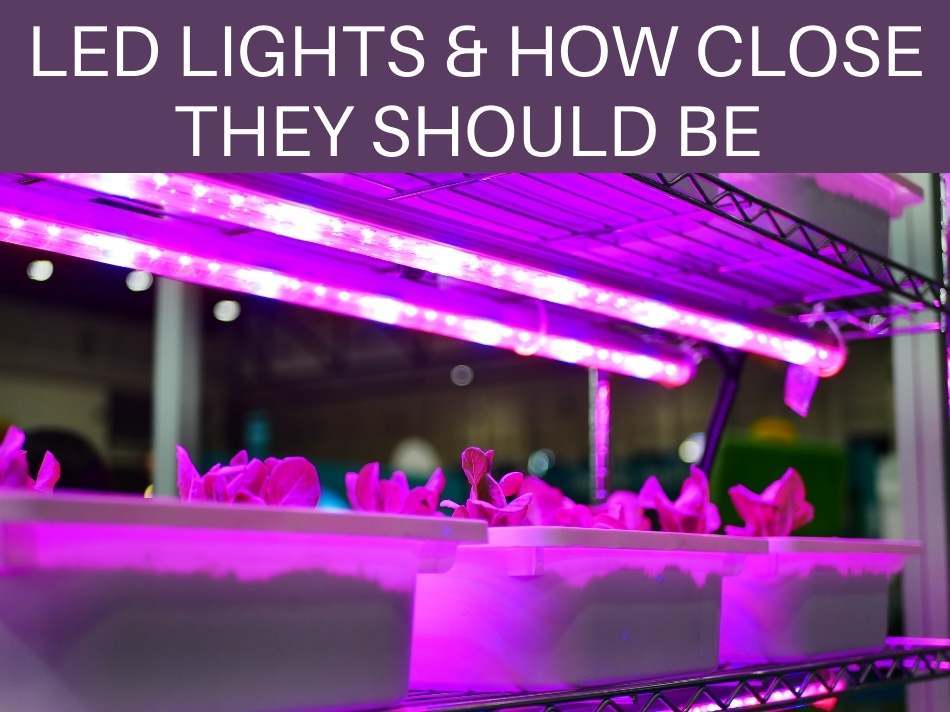
Light-emitting diodes (LED) lights are an efficient source of light for your greenhouse.
They’re extremely energy efficient, give off very little heat, emit both red & blue wavelengths of light, and generally last far longer than other types of electric lights.
In short, LED lights are the go-to type of light used by gardeners.
Since LED lights produce far less heat compared to other types of lights, plants can tolerate LED lights being much closer.
A general rule is that LED lights should be about 12-30 inches from the top of your plant.
As your plants grow, you have to change the height of your lights to accommodate the growing plants’ height.
Typically, most folks adjust the height of their grow lights using simple chains or cables, which allow the light fixture to be raised or lowered, depending on the height of the plants.
LED distance from plants and LED wattage
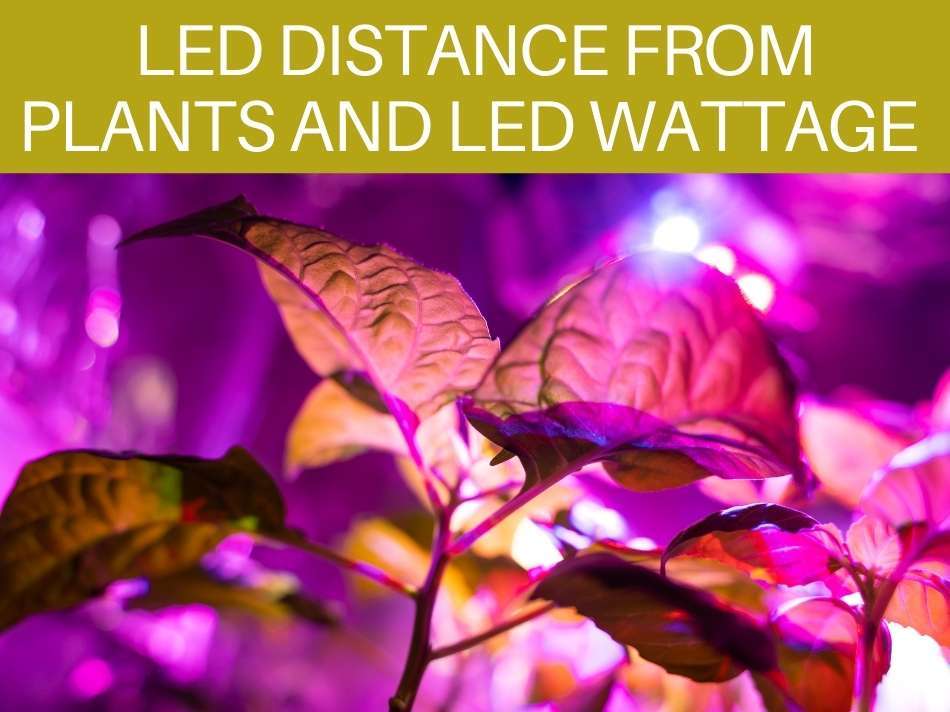
The main consideration for determining how close LED grow lights should be from plants is the wattage of your LED lights.
Higher watt LED lights mean that you’ll need to have the lights further away from plants.
Conversely, lower-wattage lights can be moved closer to plants without harming the plants.
The chart below shows how the distance between the lights & plants needs to be adjusted based on the wattage of your lights:
|
Wattage |
Distance from top of plant (inches) |
|---|---|
|
200-399 |
12-20″ |
|
400-599 |
20-27″ |
|
600-799 |
30-38″ |
|
800-999 |
32-42″ |
|
1,000+ |
36-46″ |
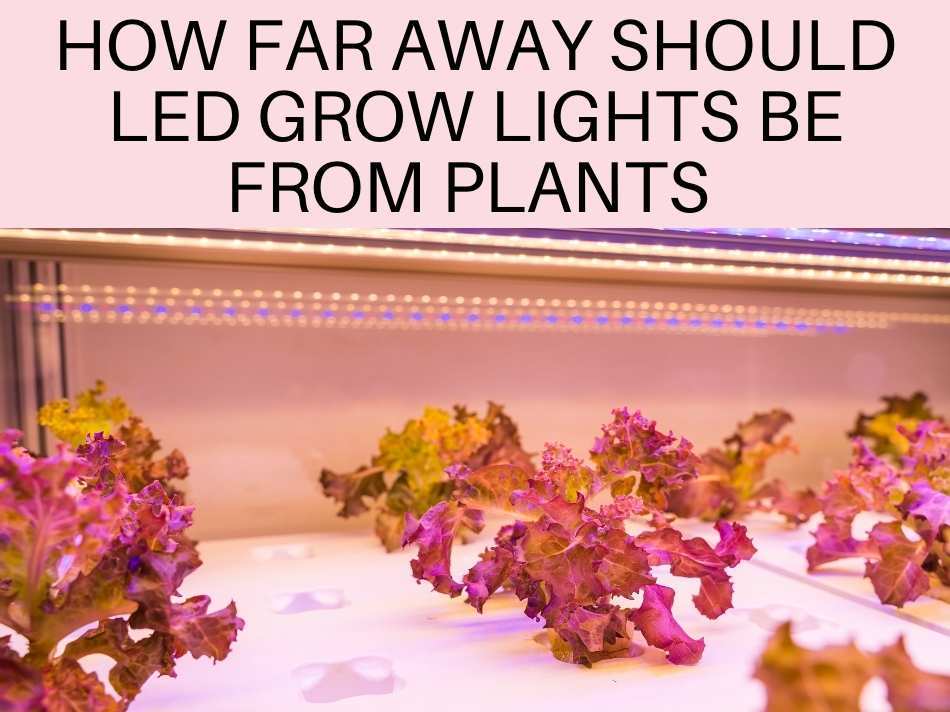
You can also play around with the distance, experimenting a few days at a time, and noting the effect on the plants.
For example, you could start with the lights a bit further away from your plants, then after a few days, move the light a few inches closer.
If you notice your plants wilting, looking burnt, the leaves looking dry or discolored, then move the lights further away.
It’s basically like looking at your plants to make sure you’re not getting them sunburnt.
Typically, when plants start flowering & producing fruit, you’ll need to move the LED light closer to the plant so it’ll have more light available for photosynthesis & producing flowers & fruit.
If your LED lights are too close to your plant, the plant will begin to bleach and develop yellow spots.
Since LED lights do not produce as much heat as other types of grow lights they do not burn plants as much.
However, you should still be cautious if the plant presents signs that it is being burned.
Different types of LED lights
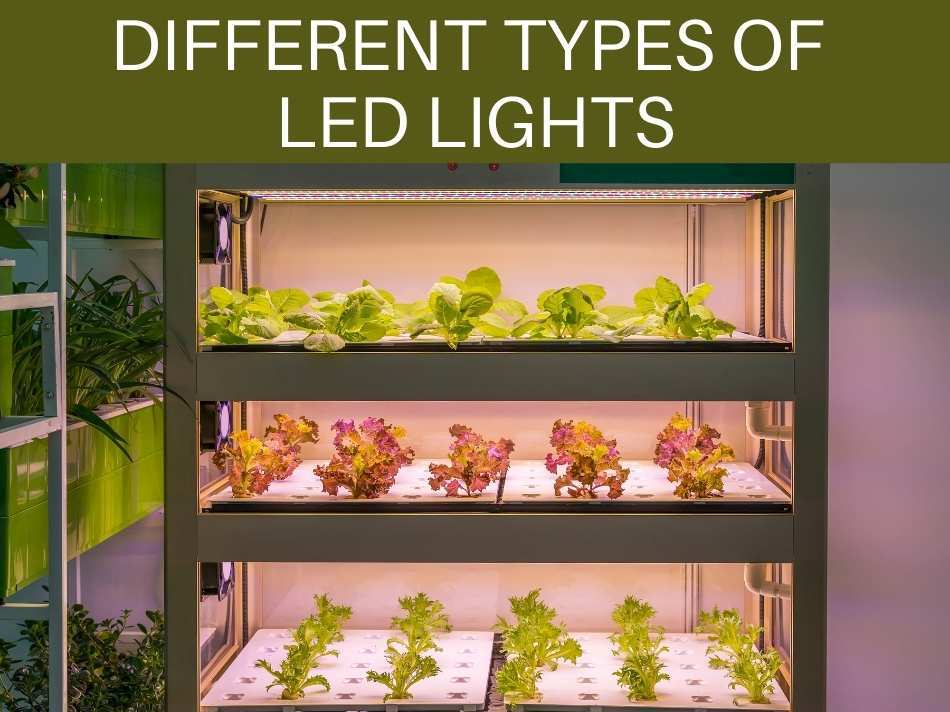
As mentioned earlier, different wattages of LED lights should be at different distances from your plants.
The lower the wattage, around 200, should be placed around 12-20 inches from the top of the plant.
Higher wattage lights, 1,000 and above, should be placed around 36-46 inches from the top of the plants.
Since LED lights emit primarily red & blue wavelengths, they’re well-suited for early-stage plant growth, as well as when the plants begin flowering & producing fruit, since those phases of plants’ life cycles require the most intensive light for maximum production.
The low intensity of the blue light helps with the plant production of chlorophyll and make photosynthesis more productive.
Red light is very energetic but is not effective on its own.
When the two lights are combines in LED lights your plants grow stronger and greener leaves.
Advantages of LED grow lights
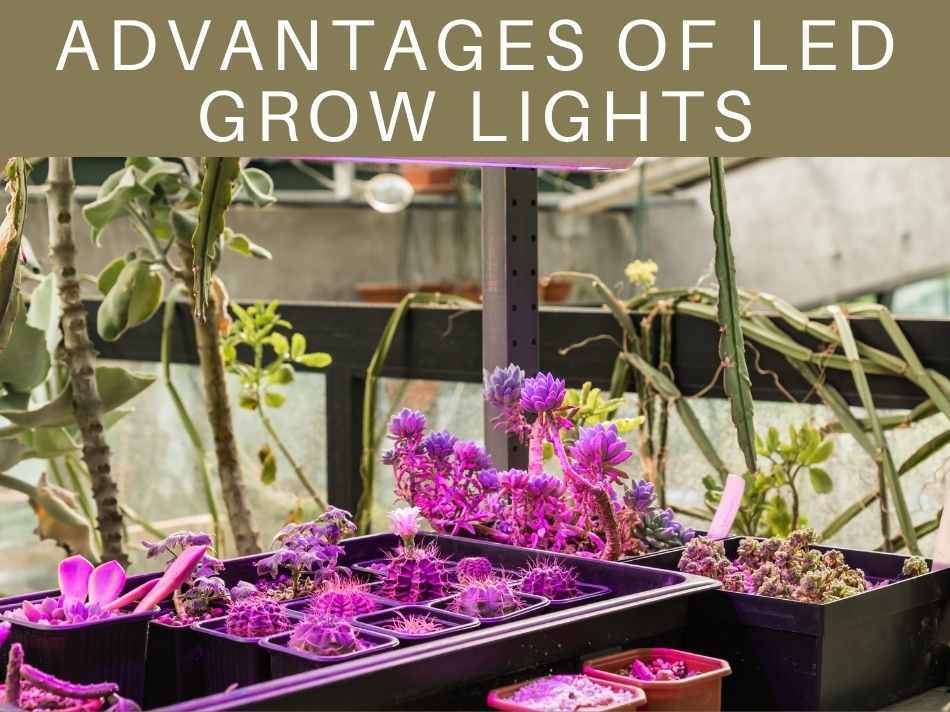
LED lights should be used for indoor gardening because they’re energy efficient, easy to install, have a longer lifespan than other lights, and produce less heat than other lights.
Compared to other lights–like high pressure sodium lights, metal halide lights, incandescent lights, and high-intensity discharge lights–LED have a lot of benefits.
For starters, LED lights last way longer–typically around 10 years or 50,000 hours.
That’s tremendously long, considering the fact that other types of lights might burn out within just a few months or a year.
Another huge plus to using LED lights is their minimal energy consumption.
So even if you’re not a tree-hugging, granola-eating hippie, that minimal energy consumption means that LEDs will cost you far less than any other type of light.
Let’s stack on another benefit to using LED grow lights: Since LED lights produce less heat, you can put them closer to your plants. They can be placed between 12-30 inches above the plants and have a low probability of burning the plants.
Speaking of stacking: since you only need 12-30 inches of space between an LED light & your plant, you can stack shelves of plants & lights vertically, doubling, tripling, or even quadrupling the amount you can grow from each square foot of floor space.
Light color and LED grow lights
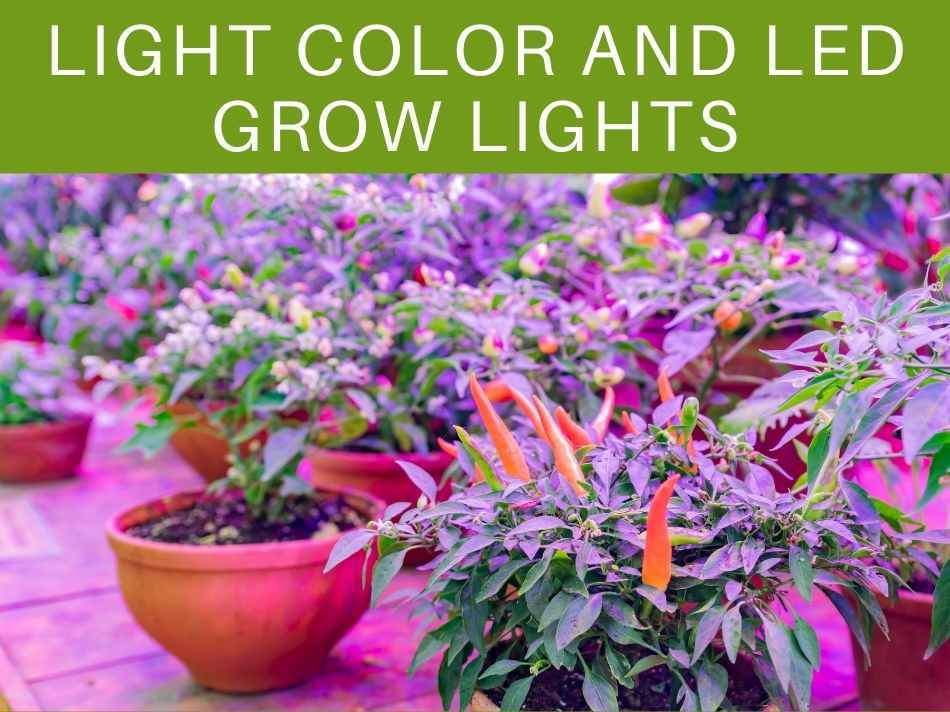
Most LED grow lights produce light in the blue & red portion of the spectrum, which is great to produce strong, green, and abundant leaves.
And yes, the color of light DOES affect plant growth.
The color of light needed by plants depends slightly on their stage of growth.
Seedlings & young plants need more blue light to put energy into growing leaves & stems.
During flowering & fruiting, plants need more red light.
So, LED lights that supply both blue & red light are a great general-purpose light source, assuming you don’t have enough sunlight (which is especially true during short winter days).
In fact, some of the newer LED lights let you adjust the color of light emitted.
You can pick a longer wavelength (red) or shorter one (blue) to benefit each type of plant.
This is a huge benefit of LED lights, since it makes LEDs the only type of light that lets you do this.
How to measure effects of LED lights
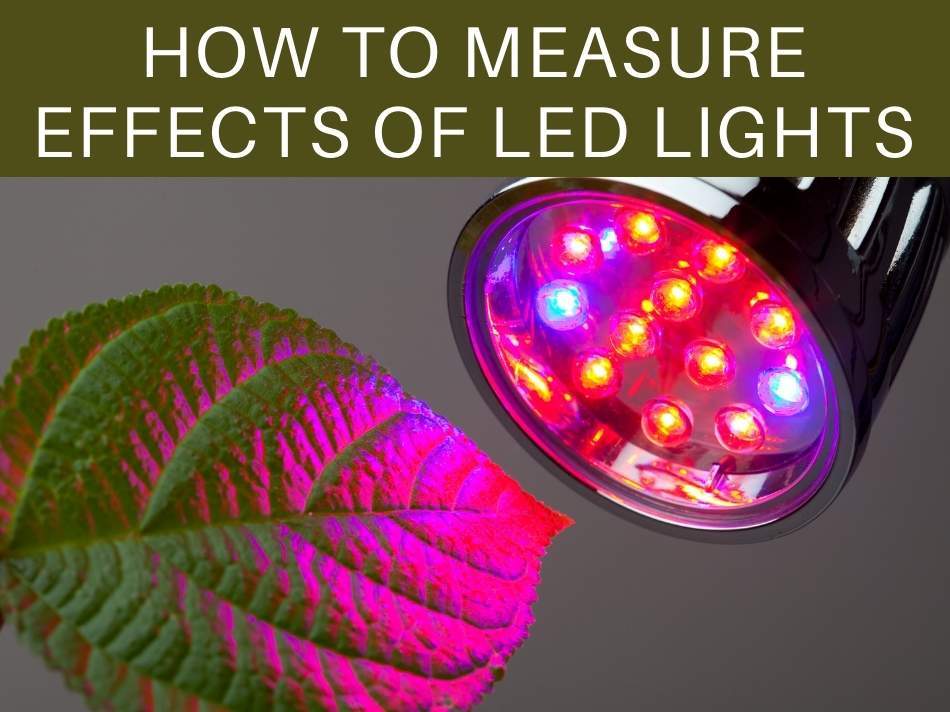
OK, we’re going to get a little technical here–but fear not!
The light produced by any kind of light–whether we’re talking about LEDs, incandescent, whatever–is measured by a lux meter.
Basically, a lux meter lets you measure the amount of light output that is produced.
Another way to measure light from your lights is by looking at photosynthetic photon flux units.
Yeah, I told you we’d go nerd. 🙂
The photosynthetic photon flux units measure the amount of light produced per second in LED lights. As this technical article from Oklahoma State discusses, LED lights produce 13 and 2,000 units of light per second.
Yeah, that’s a huge range. Like if your car could anywhere from 13 -2,000 mph.
The bottom line: LED lights have the capacity to emit a large amount of light in one second, especially for lights at the top end of that range.
So, if you’re already using grow lights and your plants aren’t growing as much as you think they should, the distance between your plants & your grow lights could be the cause.
At least that’s one factor to adjust & experiment with–soil pH, nutrients, water availability, etc. are other possible causes.
So, move your lights closer to your plants for a few days or a week, and see if it makes a difference.
How are LED lights better and worse than other types of lights
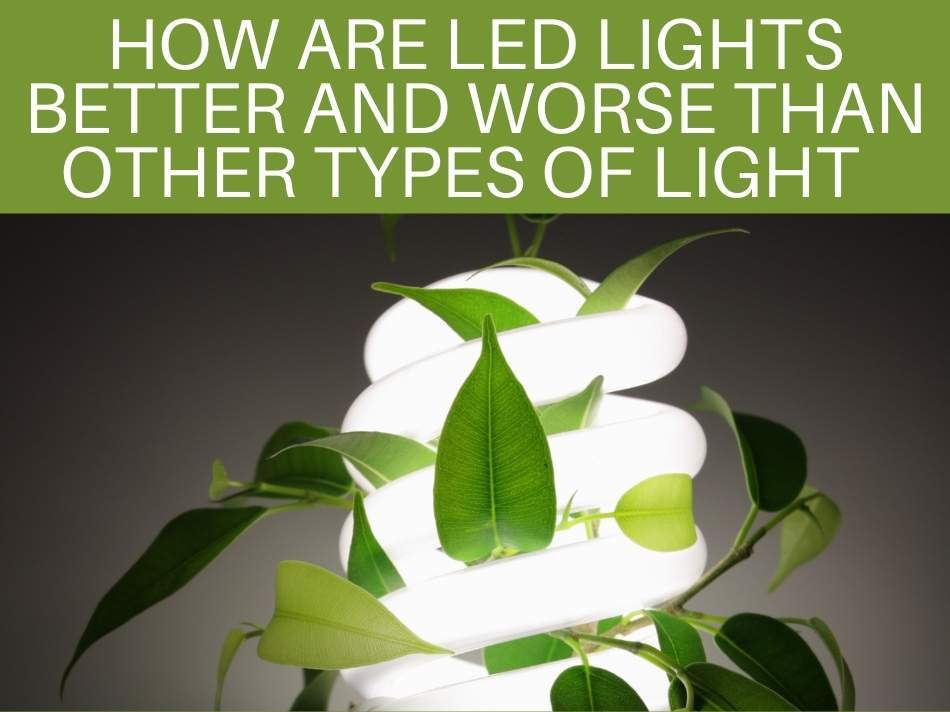
For grow lights, there are a handful of different types:
- LED
- metal halide
- high-intensity discharge (HID)
- Incandescent
- Flourescent
Here’s a quick run-down of each type of light, compared to LEDs:
|
Grow Light type |
Details |
|---|---|
|
Metal halide |
Produce blue light, so are good during beginning stages of a plants life. They consume an average amount of power, and last for the entirety of the plants life span. Typically used in conjunction with High-Intensity Discharge lights. Less efficient & shorter lifespan than LEDs. |
|
High-Intensity Discharge (HID) |
Long lifespan, but half the lifespan of LEDs. Consumes more power than LEDs. |
|
Incandescent |
Used in addition to other grow lights. Short lifespan, cost more, and are less efficient than other lights. |
|
Fluorescent |
Somewhat cost efficient. Good for herbs & some vegetables. Their uneven light causes uneven plant production. Shorter lifespan, higher cost, and more energy intensive than LEDs. |
So, clearly, LEDs come out on top–it’s actually not much of a contest.
Related Questions
Can LED grow lights damage your eyes?
Yes, LED lights have been found to be harmful to your eyes. The shorter wavelength, such as blue, are more harmful to eyes. There are protective glasses you can wear if you are concerned about the damage from the lights.
How much do LED grow lights cost to run?
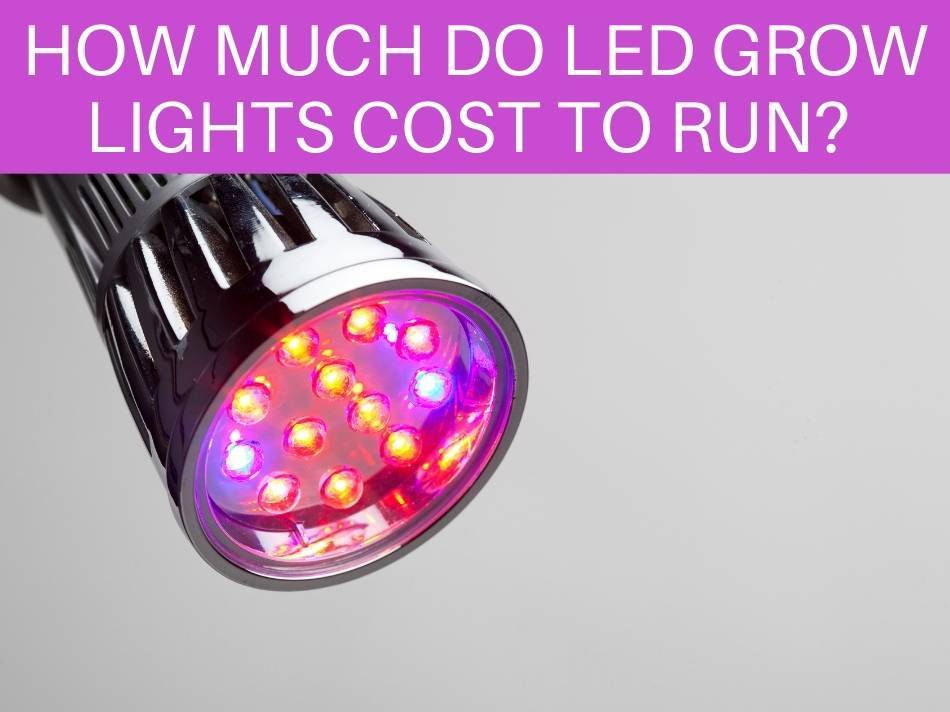
The cost of running LED lights depends on how much energy costs in your house. The first cost is the cost of the light bulb. Then based on the watts your LED lights use. A 12 watt LED light typically costs around $40 to purchase and 11 cents an hour on energy.
What color of light is best for plants?
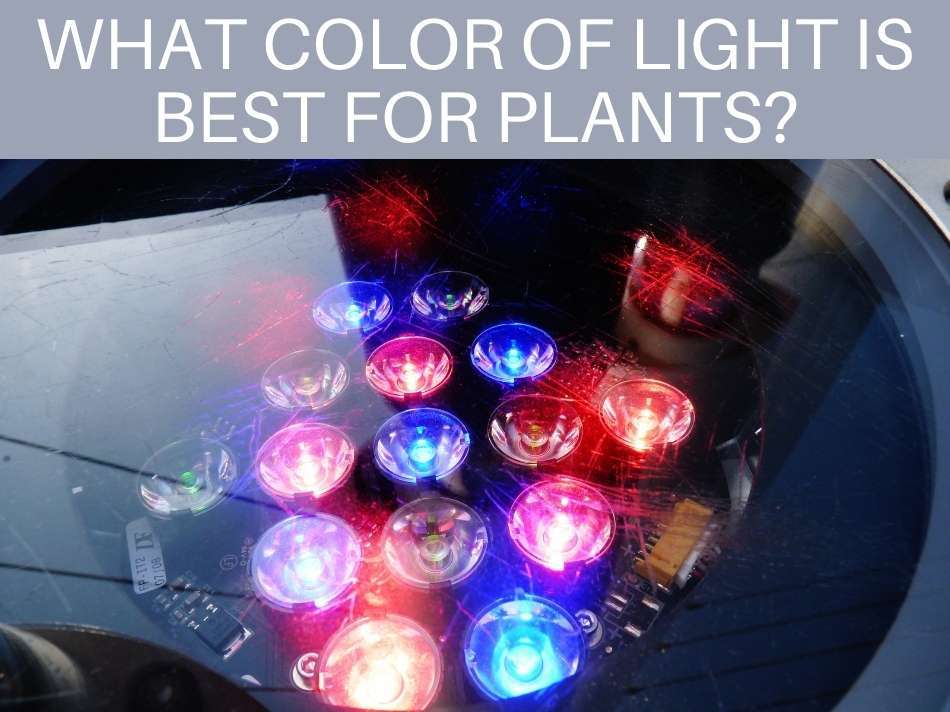
This greatly depends on the plants you are planting. Red light is good for fruiting plants and blue light are good for leafy plants. The good thing about LED lights is that the gardener has the ability to choose different light wavelengths.
